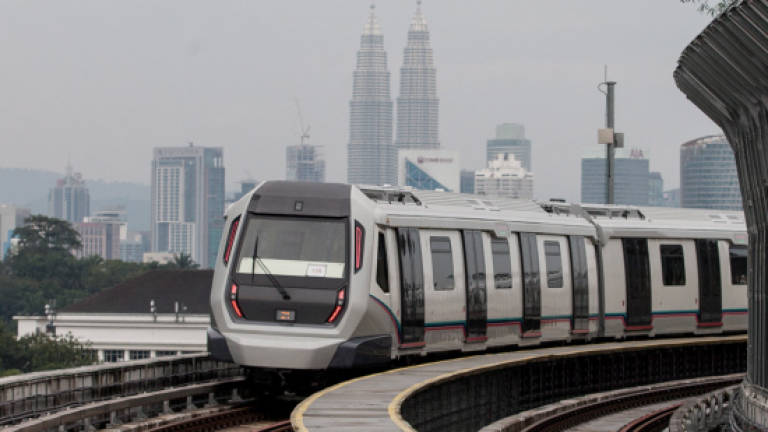MRT project to be catalyst in changing the landscape of transportation in Malaysia

KUALA LUMPUR: Tomorrow Malaysia's first Mass Rapid Transit (MRT) will be launched by Prime Minister Datuk Seri Najib Abdul Razak.
The first phase of the Sg Buloh-Kajang MRT Line, that is between Sg Buloh and Semantan, will begin its operation, and this will form the backbone of the public transport system in the Greater Kuala Lumpur/Klang Valley region.
This is because areas in the northwest and southeast of Klang Valley are not served by any urban rail lines yet.
The Kelana Jaya, Sri Petaling and Ampang Light Rail Transit lines and their extensions only serve the northeast and southwest quadrants of the Klang valley.
Hence, MRT Strategic Communications and Stakeholder Relations director Datuk Najmuddin Abdullah said the MRT project would become a catalyst in changing the landscape of transportation in Malaysia beginning with Klang Valley.
He said, among others, people staying near the MRT SBK stations would benefit from easier and better access to affordable, efficient and reliable public transport upon completion of the SBK Lines.
For example, the first phase of the completed MRT SBK Line will certainly improve the transportation connectivity for residents living in areas such as Kwasa Damansara, Kota Damansara, Mutiara Damansara, Bandar Utama, Taman Tun Dr Ismail and Semantan.
He said the fares throughout the MRT SBK Line would be an affordable RM1 to RM6.40 and other benefits included potential household savings, increased in business opportunities as well as improved mobility for workers and job seekers.
The RM23 billion MRT SBK line, which covers 51km with 31 stations, is part of the Economic Transformation Programme (ETP) projects initiated by Najib.
The Phase Two, from Semantan Station to Kajang Station will be operational by July 2017, allowing trains to run the entire alignment.
Each train set serving the line will have four cars, allowing a total capacity of 1,200 passengers with the frequency of 3.5 minutes between each train and estimating its daily ridership to be about 400,000 passengers.
Najmuddin said at a macro level, the MRT SBK Line would also benefit from the creation of work contracts and jobs, which are likely to boost the country's Gross Domestic Product.
He said, it is estimated about RM4 billion would be generated for Gross National Income direct from construction and operations of MRT (2011-2020).
While at the local level, he said there were economic benefits across a whole spectrum of groups comprising traders, business operators, service providers and property owners.
For example value of lands near MRT station will appreciate, job opportunities to open up at all levels during construction and after completion of the project.
In addition, some 112 feeder buses will operate in all 12 stations of the MRT first phase route where commuters only needed to pay RM1 for the feeder bus service.
Another 188 feeder buses would operate according to schedule when MRT is fully completed from Semantan to Kajang in July 31, 2017.
While for park-and-ride facilities, there will be a total of 14 multi-storey and open-air carparks with 8,000 bays available at stations along the 51km long SBK Line.
Najmuddin said the effort to improve on public infrastructure was a never ending endeavour and the same was to be said for the MRT.
"We would want to continuously expand our reach to more areas and one of the ways is to integrate with other rail service, inadvertently improving the connection of rail service as a whole," he added. — Bernama